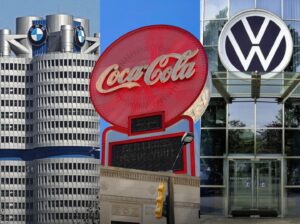Street art, a vibrant and dynamic form of artistic expression, has journeyed from its inception on the gritty walls of urban decay to becoming a globally recognized and influential art form. Originating as graffiti, an act of rebellion spray-painted by night, it has evolved into a canvas for social commentary, personal expression, and cultural dialogue. This transformation reflects not only the changing perceptions of public space and aesthetics but also the evolution of artists who have moved from the shadows into the spotlight.
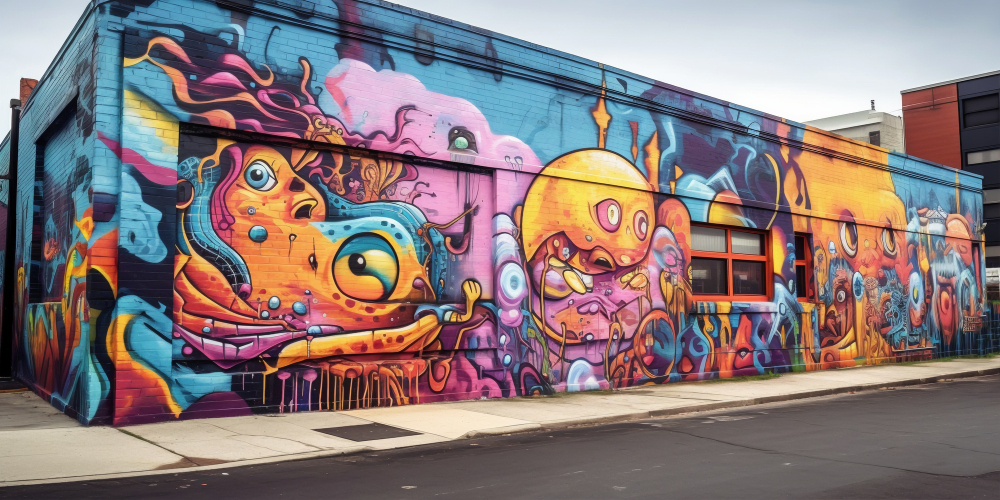 Pin
Pin Photo by Freepik
The impact of street art stretches far beyond the visual; it challenges conventional notions of the ‘gallery’, democratizes art for a wider audience, and often sparks critical conversations about political, social, and ethical issues. In examining the journey from graffiti’s roots to its global influence, we uncover the multifaceted layers of street art, exploring how it continues to shape and be shaped by the contours of contemporary culture.
Table of Contents
Historical Context of Graffiti
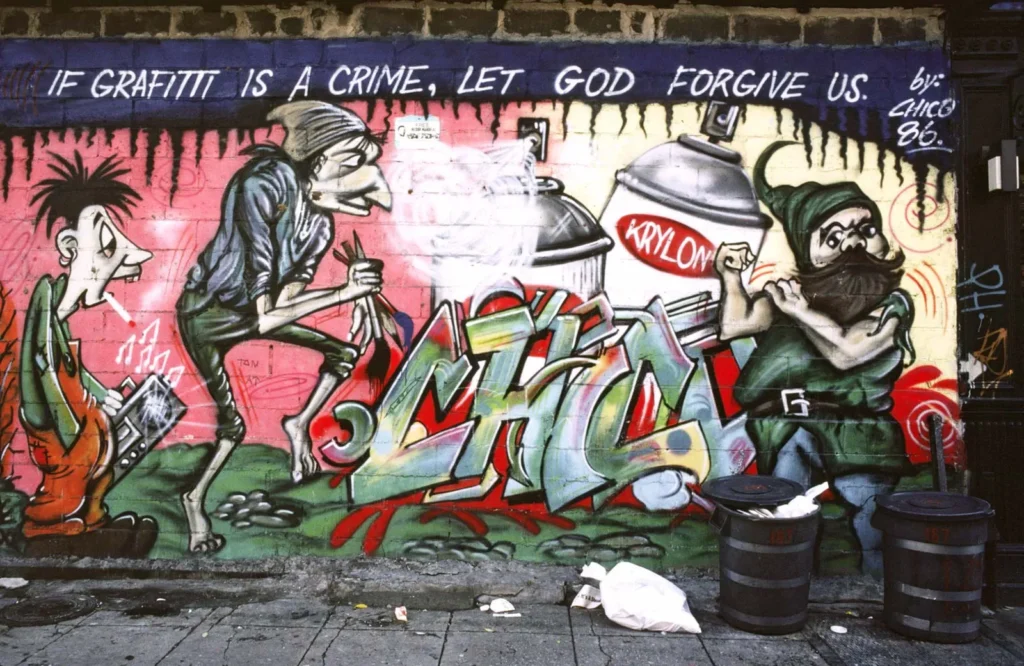 Pin
Pin Photo by Britannica
Graffiti, as a mode of expressive visual communication, has origins that extend to ancient civilizations. Ancient Egyptians, Romans, and Greeks used it to memorialize, communicate societal grievances, or simply declare personal sentiments on public walls. This rudimentary form of graffiti set the stage for its evolution into a potent tool of expression and rebellion. By the late 20th century, particularly in the 1960s and 1970s in urban environments like New York City, graffiti underwent a transformative shift. It emerged from the shadows of vandalism to be recognized as a form of street art, embodying the voices of the disenfranchised and acting as a stark rebellion against prevailing societal norms.
In this era, graffiti became a means for marginalized groups to claim space in urban landscapes, using city walls as canvases to broadcast their frustrations, hopes, and resistance. This period highlighted the power of graffiti as a form of socio-political commentary, elevating it beyond mere defacement to a significant element of urban culture and discourse. Artists like Jean-Michel Basquiat emerged from this movement, bridging street art with the high art world and thus cementing graffiti’s role as a crucial and vibrant conduit for social and cultural expression. The historical context of graffiti, especially its explosion in the late 20th century, underscores its significance as an artistic rebellion and a voice for the voiceless, influencing generations of artists and the perception of street art globally.
Technological Advancements
 Pin
Pin Photo by MTN WORLD
The ascendance of digital technology and social media platforms has indelibly transformed graffiti, catapulting it from the confines of local neighborhoods to the vast stage of a global audience.
Historically perceived as an underground or localized form of expression, graffiti has embraced the digital revolution, thereby redefining its cultural and artistic significance. Artists have ingeniously incorporated digital tools into their creative process, utilizing software for detailed planning and design sketching that was unimaginable in the graffiti’s spray-paint-and-stencil past. This integration of technology not only enhances precision in their artwork but also allows for more complex and richly detailed creations.
The advent of virtual reality (VR) has further expanded the boundaries of street art, enabling artists to craft immersive experiences that transcend the traditional two-dimensional plane. Through VR, viewers are not merely passive observers but active participants, navigating through interactive street art environments that defy physical limitations and geographical boundaries. This evolution signifies a monumental leap in how graffiti is experienced, making it more accessible and engaging to a wider audience.
Social media platforms have been instrumental in this transformation, serving as global showcases for graffiti artists. Instagram, Twitter, and Facebook, among others, provide free, powerful tools to broadcast their artwork beyond the local alleyways and streets, reaching audiences worldwide. This global visibility has not only democratized street art, making it more universally accessible but has also fostered a cross-cultural exchange of ideas and styles, further enriching the graffiti community. Thus, through the symbiosis of digital technology and social media, graffiti has been reimagined from a form of local dissent to a celebrated global art movement.
Legalization and Commercialization
The evolving perception of graffiti underscores a significant societal shift, transitioning from an act once universally condemned as vandalism to being increasingly recognized and celebrated as a legitimate and vibrant form of urban art. This transformation is not merely cultural but also legal and commercial, marked by the growing phenomenon of commissioned street art. Cities across the globe are now designating legal walls where artists can freely express their creativity without the fear of legal repercussions, fostering an environment where the street art scene can flourish. These sanctioned spaces provide a canvas for artists to showcase their work, contributing to the urban aesthetic and attracting tourists and locals alike.
The commercialization of graffiti further illustrates its transition into mainstream acceptance. Artists are often commissioned by businesses and municipalities to create murals that not only beautify urban landscapes but also serve as powerful marketing tools. This has opened new revenue streams for artists and has integrated graffiti into the fabric of commercial and urban planning strategies.
However, this commercial interest influences not only where but also what is painted, potentially limiting the artistic freedom that is the essence of graffiti culture. While some argue that commercialization dilutes the rebellious spirit of graffiti, others see it as a necessary evolution for the art form’s survival and recognition. This dual nature of graffiti’s commercialization reflects the broader conversation about the balance between artistic integrity and economic viability in contemporary art.
Influence of Globalization
The influence of globalization has significantly reshaped the landscape of street art, creating a vibrant tapestry of global influence that transcends geographical boundaries. At the heart of this cultural exchange are two pivotal elements: global travel and internet connectivity. These factors have facilitated unprecedented cross-cultural interactions within the street art community, allowing artists from disparate corners of the world to share, collaborate, and innovate together.
As artists traverse continents, they carry with them their unique styles, techniques, and perspectives. This physical exchange is complemented by the digital world, where the internet acts as a boundless gallery. Social media platforms, blogs, and websites have become instrumental in showcasing street art to a global audience. Artists draw inspiration from the digital exposition of styles that span from New York’s graffiti to Berlin’s murals and beyond, leading to the fusion and evolution of street art styles.
This cross-pollination has contributed to the development of a diverse global street art culture. Artists are no longer confined to the influences of their immediate environments. Instead, they are part of a dynamic, interconnected community where a piece of street art can reflect a multitude of global influences, from Latin American vibrant colors to Asian calligraphy strokes. This global influence fosters a continual evolution of street art, making it a powerful medium for cultural expression and dialogue in the contemporary world.
Artistic Innovation
In the 21st century, the evolution of street art has been characterized by significant artistic innovation, witnessing the emergence of new styles, techniques, and materials that have redefined its essence and outreach. Traditional views of graffiti as simple acts of vandalism have been challenged and transformed as artists adopt sophisticated methods like stenciling, poster art, and digital projections to create intricate, nuanced works that blur the boundaries between street art and high art.
Stencils have become a powerful tool for street artists, allowing for the reproduction of intricate designs with sharp precision and speed, a method popularized by artists such as Banksy. This technique has enabled artists to convey complex, politically charged messages, integrating them seamlessly into the urban fabric.
Poster art, on the other hand, merges the appeal of graphic design with the raw energy of street art. Artists employ this method to paste striking visuals or messages, sometimes on a colossal scale, directly onto city walls. This temporary, paper-based medium adds a layer of vulnerability and ephemerality to the work, emphasizing its anti-establishment roots.
Digital projections bring a dynamic and ephemeral aspect to street art, where light and technology meet to temporarily transform buildings and structures into mesmerizing displays of public art. These projections can cover vast surfaces without leaving a permanent mark, enabling artists to create bold statements about social and political issues while engaging a wide audience.
Together, these innovative approaches have expanded the scope of street art, making it more accessible and versatile. They reflect a shift towards a more nuanced understanding of public spaces and the role of art in social commentary and urban life. By leveraging such techniques, artists not only challenge traditional notions of graffiti but also engage broader audiences in meaningful dialogues about culture, identity, and change.
Socio-Political Impact
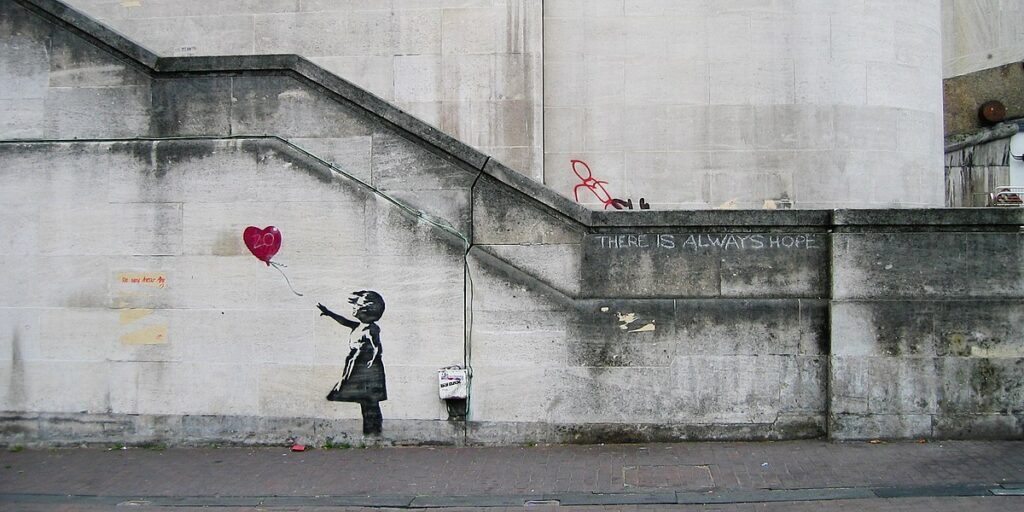 Pin
Pin Original mural “Girl with Balloon” on Waterloo Bridge in South Bank in 2004, Artist – Bansksy, Year – 2002
Street art has emerged as a compelling medium for socio-political commentary, offering a canvas for public sentiment on pressing issues including climate change, equality, and human rights. Far from being mere acts of vandalism, these works have evolved into influential pieces that spur public discourse and ignite reactions from across the societal spectrum. Street art’s accessibility and visibility make it a unique form of public interaction, capable of reaching a diverse audience beyond the confines of traditional galleries.
One significant example is the work of the anonymous artist Banksy, whose pieces often discuss themes of peace, war, and poverty, critiquing societal norms and political institutions. Banksy’s artwork, such as the “Girl with Balloon” or the “Steve Jobs refugee piece” in Calais, France, encapsulates deep social commentary, urging viewers to reflect on pressing issues. Similarly, Shepard Fairey’s “Obey” campaign and the “Hope” poster for Barack Obama’s 2008 presidential campaign blend art and activism, leveraging the street art form to mobilize and inspire.
Murals dedicated to climate change and racial equality have gained prominence worldwide, transforming urban landscapes into forums for dialogue and catalysts for action. These artworks often use striking imagery and poignant messages to highlight the urgency of environmental conservation and to promote social justice, resonating with a broad audience and mobilizing communities towards change.
Through its raw and unfiltered expressions, street art has indeed become a vital tool for social and political engagement, capable of reflecting and influencing public sentiment on global issues.
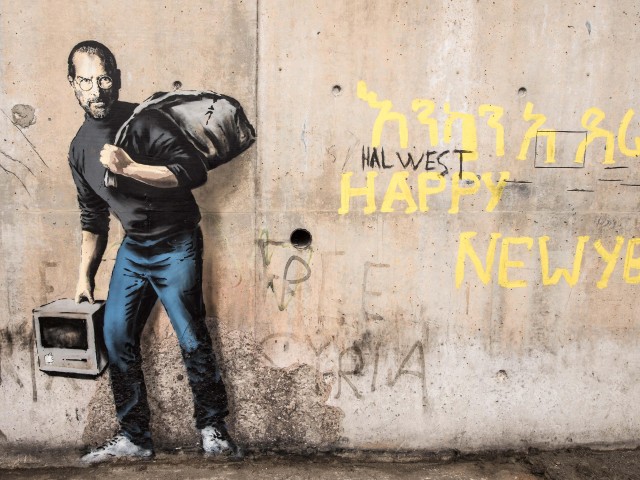 Pin
Pin Banksy’s artwork of Steve Jobs at the Calais Refugee Camp.
Integration into Public Spaces
Integration into public spaces marks a transformative approach towards urban design and community engagement through the embrace of street art. Traditionally seen as a fringe or rebellious form of expression, street art is now being intentionally woven into the fabric of public spaces like parks, open-air galleries, and urban renewal projects. This shift reflects a growing recognition of its potential to enrich urban aesthetics, inject vitality into underused or neglected areas, and engage communities in meaningful ways.
By incorporating street art, cities and planners are acknowledging the depth and diversity of local culture and identity, offering a platform for artists to contribute to the city’s visual narrative. This integration not only beautifies spaces but also invites public interaction, turning ordinary walks through the city into immersive, artistic experiences. It fosters a sense of pride and ownership within the community, encouraging residents and visitors alike to appreciate and preserve the uniqueness of their urban environment.
Street art in public spaces acts as a catalyst for social dialogue, depicting themes relevant to societal issues, history, and collective aspirations. It demystifies art, making it accessible to all, and encourages public participation in cultural discourse. This strategic incorporation signifies a positive move towards inclusive urban planning, where art is not confined to galleries but is a living part of the city’s landscape, enhancing the quality of life and promoting a vibrant, engaged community.
Artistic Recognition and the Gallery Space
Artistic recognition within gallery spaces has notably evolved, particularly with the increasing acceptance and exhibition of street art. Historically, the realm of established art institutions championed traditional forms like painting, sculpture, and installation art, often sidelining street art due to its unconventional origins and ephemeral nature. However, the past few decades have seen a seismic shift, with street artists gaining international acclaim and their work being sought after by prestigious galleries and collectors alike. This pivot reflects a broader cultural recognition of street art’s value, technical virtuosity, and unique ability to communicate directly with the public.
Yet, the institutional embrace of street art raises critical debates regarding its commodification. Originally, street art was an act of rebellion, a form of visual dissent painted on public surfaces to elude commercialization and to speak directly to a community. Its transference into gallery spaces transforms these once-temporary acts of expression into commodified objects of desire. This transition challenges the foundational ethos of street art, sparking discussions about authenticity, ownership, and the implications of monetizing a medium that was inherently designed to be free, transient, and accessible to all. As street art continues to find a home within the white walls of galleries, the art world grapples with these complex issues, navigating the delicate balance between celebrating this vibrant art form and preserving its original spirit and intent.
Influence on Pop Culture and Fashion
Street art, once considered a fringe form of expression relegated to urban landscapes’ outskirts, has dramatically infiltrated mainstream media, fashion, and advertising, fundamentally altering the landscape of pop culture. This migration of street art aesthetics into more conventional arenas has played a pivotal role in dismantling the longstanding dichotomy between high art and street culture, advocating for a more inclusive understanding of artistic merit.
The influence of street art on pop culture is evident in the way it has reshaped fashion and advertisement narratives, infusing them with vibrant, raw energy that resonates with a broader audience. Major fashion labels have embraced graffiti-inspired designs, incorporating them into their collections, thus serving as a testament to the undeniable impact of street culture on high fashion. This fusion not only reflects the evolving tastes of contemporary society but also symbolizes the breaking down of barriers between what was historically perceived as exclusive and the authentically popular.
In advertising, street art’s bold visuals and social commentaries have been adopted to connect with audiences on a more genuine and relatable level, demonstrating its power to convey messages in compelling and innovative ways. This shift underscores a significant cultural transformation, where street art is no longer viewed as mere vandalism but as a legitimate and influential form of artistic expression, capable of shaping and reflecting societal trends and sentiments. As street art continues to gain recognition and acceptance, its role as a cultural force is solidified, blurring the lines between different art forms and democratizing the way art is consumed and appreciated in the public domain.
Challenges and Controversies
Street art, a vibrant thread in the fabric of urban culture, embodies the voice of the city, bringing life to dreary walls and sparking conversations among passersby. Despite its undeniable growth and increasing acceptance as a legitimate form of artistic expression, street art navigates a complex landscape riddled with challenges and controversies.
One significant issue is gentrification. As urban areas adorned with dynamic murals become magnets for tourists and locals alike, they attract investment and development. This newfound attention can lead to rising property values and living costs, inadvertently displacing the very communities that fostered the art scene’s growth. Street artists, who originally sought to reclaim and beautify spaces, can unintentionally catalyze changes that push out long-standing residents.
The debate over the legality of unsanctioned works remains a pivotal aspect of the discourse surrounding street art. While some view it as an act of vandalism, others defend it as a fundamental right to free expression and a powerful tool for social commentary.
This legal ambiguity challenges artists, who risk legal repercussions for their public expressions, and complicates the efforts to preserve and protect these ephemeral works. As cities grapple with these issues, the future of street art hangs in a delicate balance, highlighting the need for inclusive dialogues and policies that recognize the cultural value of street art while addressing the underlying challenges of gentrification and legality.
Conclusion
The journey of street art from the rebellious strokes of graffiti to a globally impactful art form underscores a remarkable evolution within both the art world and society at large. This transformation not only signifies a shift in the aesthetic appreciation and spatial dynamics of urban environments but also highlights the power of art as a tool for social engagement, political discourse, and cultural expression. Street art, in its myriad forms, has not only transcended geographical and cultural boundaries but has also redefined the relationship between the creator, the community, and the canvas of the city itself. As it continues to evolve, street art remains a testament to the enduring human need to communicate, question, and connect within the public domain, leaving an indelible mark on the fabric of contemporary culture.

































